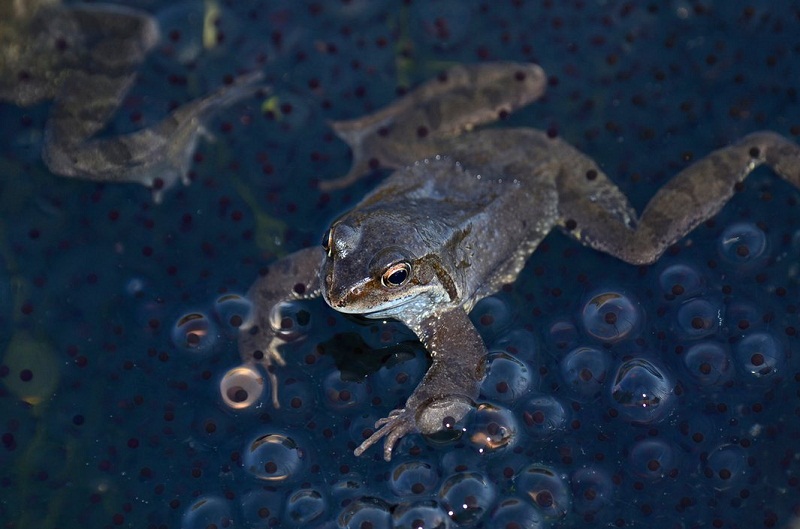Amphibian icons of prodigious procreation

What is it about frogs and toads that has made them such classic icons of sexual reproduction? It cannot be timing, because their breeding is often over before the other elements of high spring – flowers, bees, birdsong, sunshine – are in full flood. Frogs will gather at the spawning pond when the starlit nights are frosted and the vegetation rimed in white. Nor can it be that frogs or toads flesh out the dawn chorus. I have often found that frogs are most vocal on late-winter nights, and the little burp of toads, which is more creak than croak, is so quiet one has to strain to pick it out. The soft, even, purring of frogs is sweeter but, as one herpetologist noted, a pondful of thousands in full throat was completely inaudible just 50m away. One aspect must surely be the volume of their fertilised eggs, as well as their richly suggestive physical form. When I was a child I loved to run my hands through the pond water to get the strange claggy jelliness of it. Here at Lightwood, less than 1km from where I was born, the frogs’ reproductive labours have been prodigious. There’s one immense reef of spawn and when I spotted a lone toad doing a breast-stroke through it, the old man’s legs sculling in perfect synchrony, it reminded me a little of a bird passing through dark cloud. I suspect what really compels our imaginations is their sheer drive. Toads climb walls to get to spawning ponds. They will arrive already atop their mates, glued to them with a grip known as amplex. He can keep this up for weeks and not even taking away his head will loosen his ardour. The female, meanwhile, can become englobed in testosterone, 12 males smothering her even until she drowns and starts to decompose.

